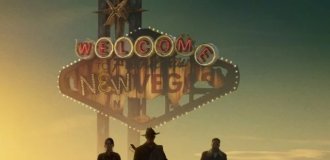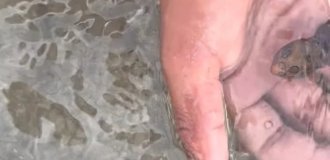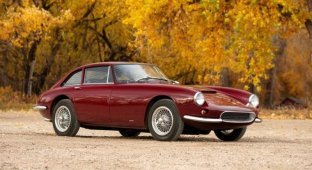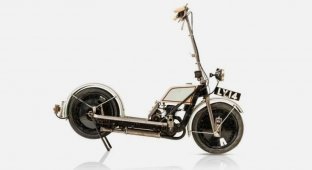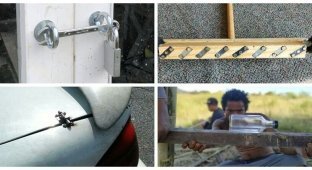10 masterpieces of art that the Etruscans created (11 photos)
Many do not know anything about the Etruscans. But this is powerful people who lived in Italy from the ninth century BC and became famous ingenious engineering projects and militancy. They ruled from foot of the Alps to Campania, but by 27 BC. became part of the Roman peace. Most of the information about the Etruscans was taken from the texts of the Roman and Greek writers, and the masterpieces of art that they left behind myself. Let's learn some facts about Etruscan masterpieces! 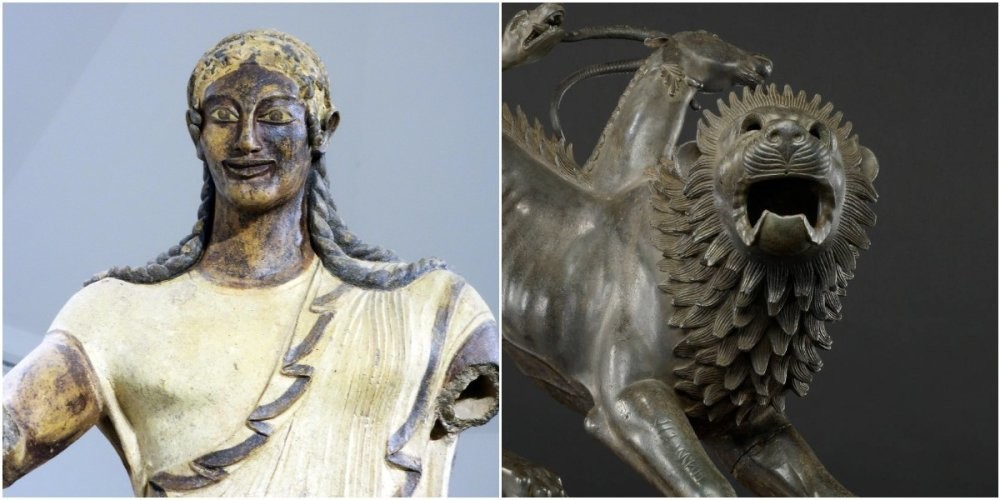
1. Apollo Veian 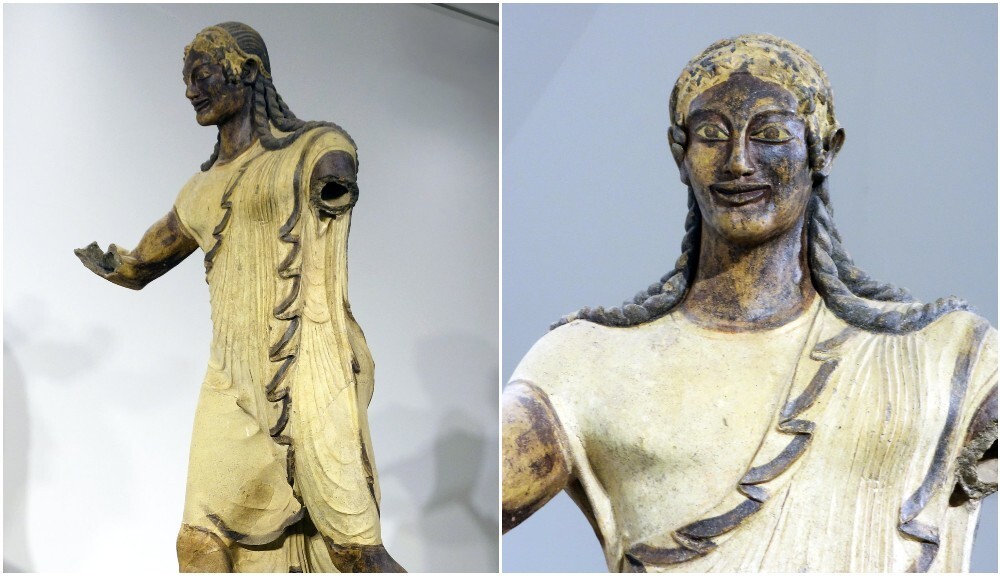
Remains found in the Sanctuary of Minerva in the ancient city of Veii terracotta statues and religious objects. One of the best surviving - the statue of Apollo, which was located at a height of 12 meters on the akroterion of the sanctuary. The statue dates from around 500 BC. ad. It was created based on the Greek styles of art, and once it was painted in different colors, like most ancient statues.
2. Statue of Mars from Todi 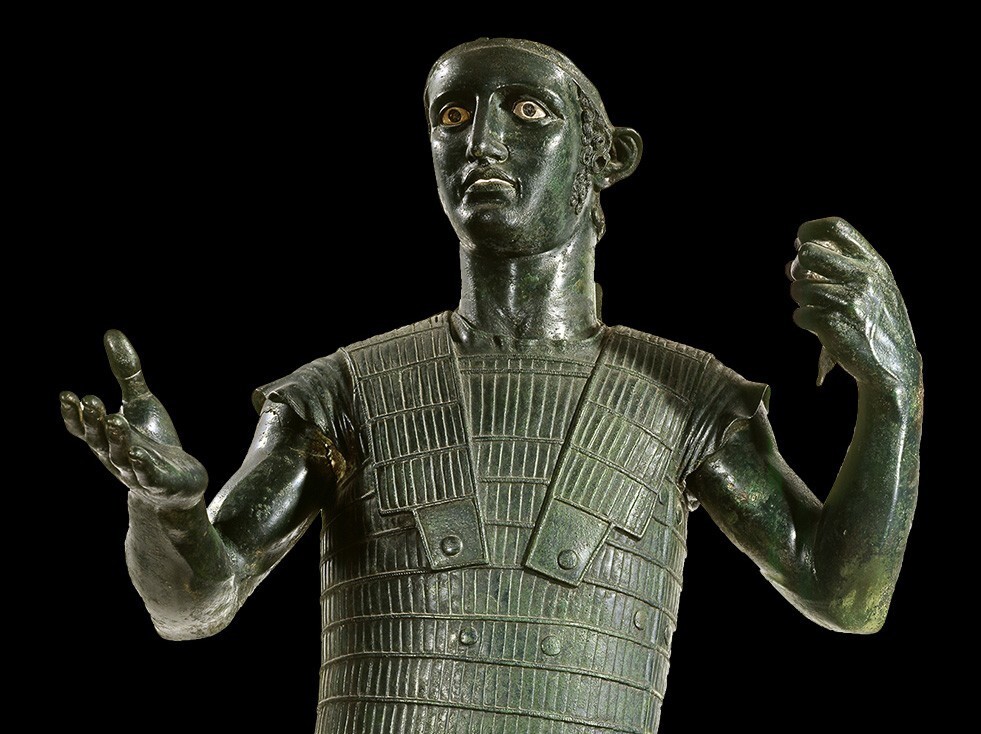
In addition to terracotta statues, the Etruscans were famous for their bronze works of art. In 265 BC, when the Romans sacked the Etruscan city of Velzna, they took away more than 2,000 bronze statues. Many of them represent the gods of the Etruscans. One of the most impressive is the statue young warrior, sometimes called Mars of Todi. It was made at the end of 5 century BC, and found buried under stone slabs. On the soldier's armor has a small inscription indicating that the statue was made for Akhal Trutitis - but historians have not established who it is.
3. Dying Adonis 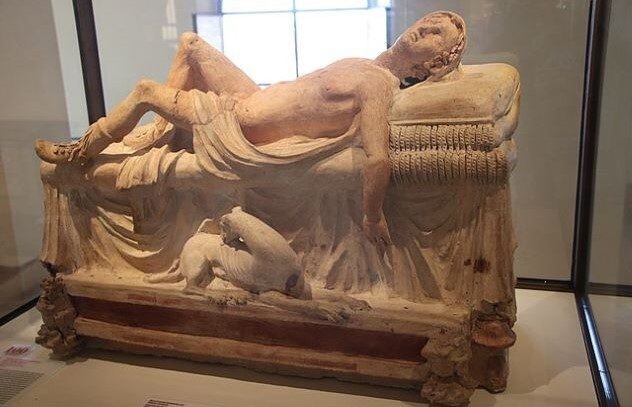
Much of the Etruscan art depicts sarcophagi and decorated tombs. One of these is the terracotta statue III century BC, depicting the death of the god Adonis on an Etruscan tomb. According to Greek myth, Adonis was wounded by a wild boar while hunting. He bled in the arms of his beloved, Aphrodite, with a wound on his left hip. This sculpture is considered one of the evidence that in its Etruscan art combined the myths and legends of other cultures. Historians also believe that they believed in life after death.
4. Sarcophagus of Seyanti Hanuniya Tlesnas 
The tombs of the Etruscans were unique, decorated and beautiful - for those who could afford it. One of the famous Etruscan statues - the sarcophagus of Seyanti Hanuniya Tlesnas, an Etruscan statue noblewoman, which is kept in the British Museum and dates from the 2nd century BC AD The noblewoman is depicted on a terracotta sarcophagus in a luxurious dress, robes and tiare.
5. Sarcophagus of spouses 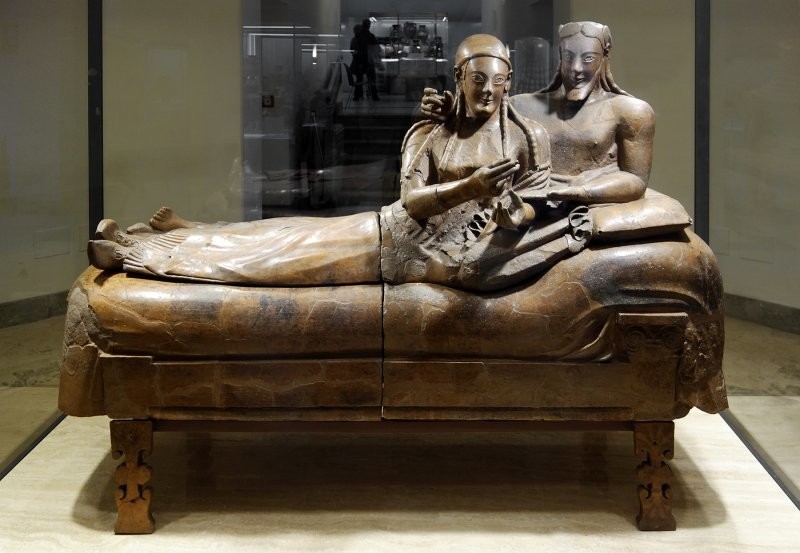
Etruscan tombs were often used for burial several members of the same family - this is evidenced, among other things, drawings on the tombs themselves. On this statue from the 6th century BC a married couple is depicted on a sarcophagus. The statue was assembled from four large pieces of terracotta, and like many other Etruscan statues, she was painted in different colors. A similar statue is in the Louvre, France.
6. Tomb of the Leopards 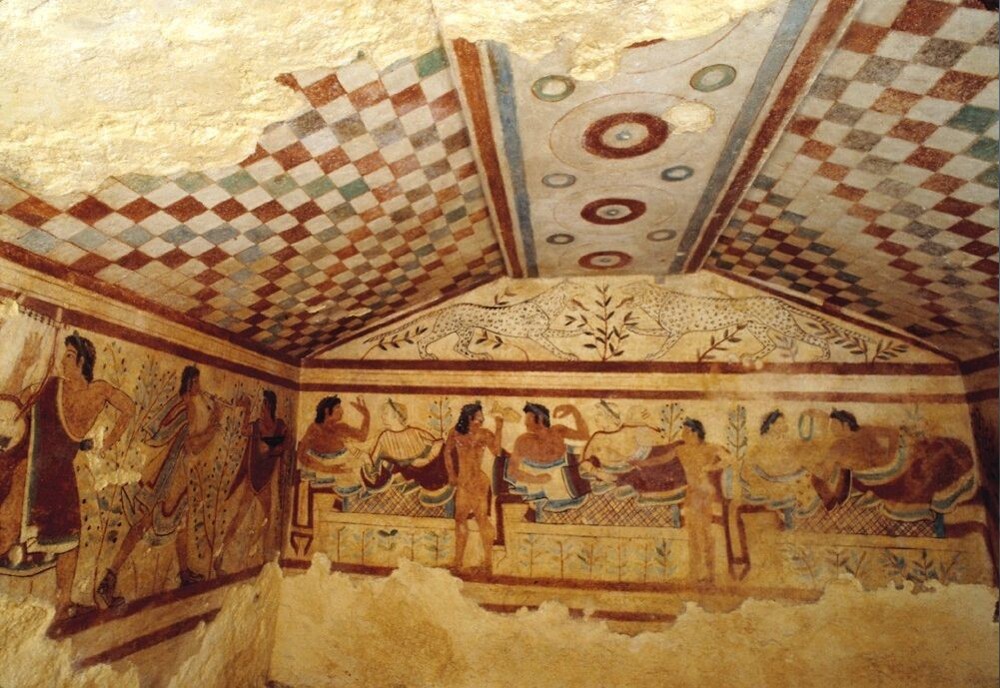
Many Etruscans were buried in necropolises - large funerary complexes. Some of them had a complex structure, or, for example, were carved into the rocks. The Leopard Tomb is an Etruscan funerary complex, where two leopards are depicted in the upper part, and people in the lower part during the feast. The images on the walls of the tomb caused the historians many questions. Perhaps this was the idea of the Etruscans about the afterlife life, or the image of a meal in honor of the dead.
7. Chariot of Monteleone 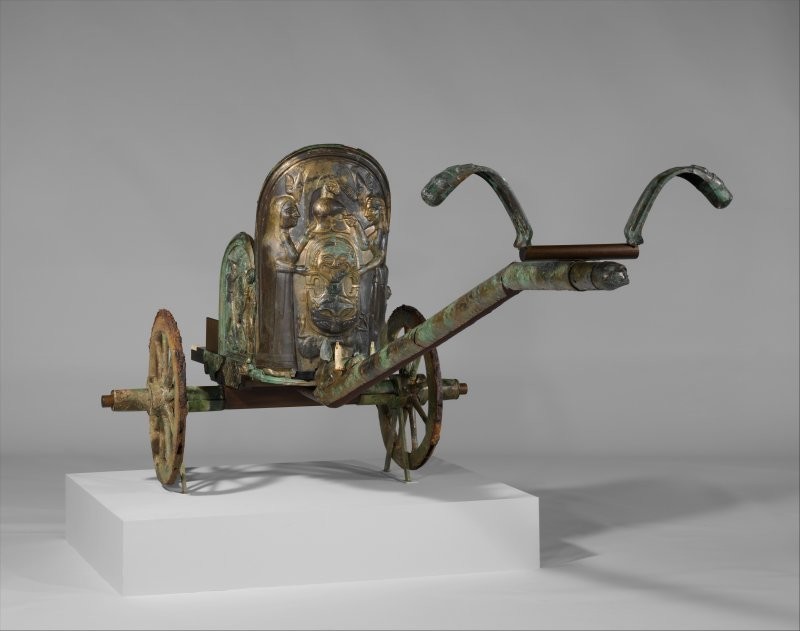
Monteleone's chariot dating back to 530 BC - one of the best preserved chariots from antiquity. Chariot preserved so well because it was buried in a tomb. She remained untouched until the owner of the territory stumbled on it during work. The chariot was then sold to the Metropolitan Museum of Art in New York. The chariot itself is made of wood covered with thin sheets bronze, with ivory, amber and glass inlays. On bronze The sheets depict the ancient Greek hero Achilles, the catoroma transfers the armor of his mother, Thetis. As experts have established, "Burial" chariot was seriously damaged.
8. Etruscan Jewelry 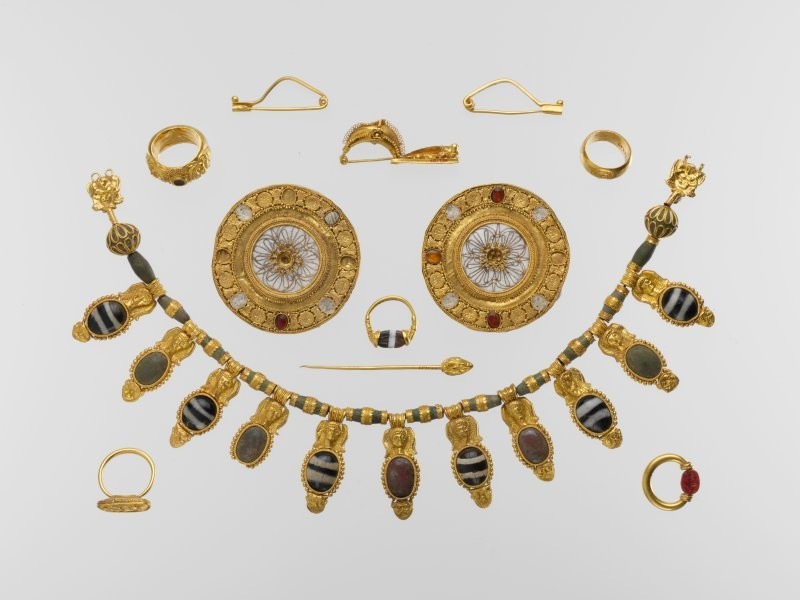
Most Etruscan jewelry is made from 18 carat gold and decorated with numerous intricate patterns. On many of them depict motifs from Greek legends, and even Egyptian scarabs. Decorations called Vulci (pictured) are kept in the museum Subway in New York. They were found in an Etruscan grave dating back to 5 century BC. The set contains ten pieces of jewelry, including - luxury gold necklace with 11 glass pendants, two earrings with rock crystal, rings and several brooches. To create jewelry the Etruscans also used rare materials - for example, amber, which brought from the Baltic Sea.
9. Golden Book of the Etruscans 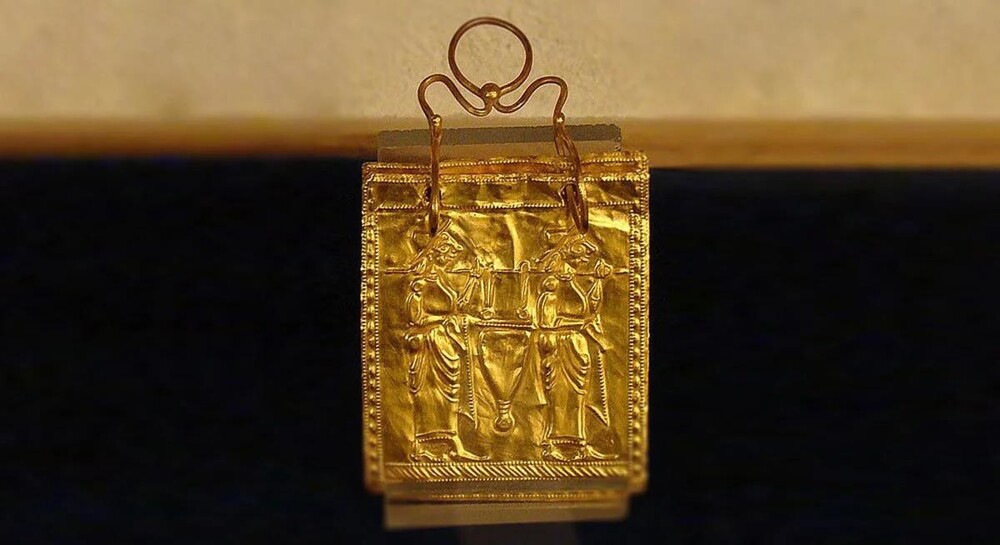
This ancient Etruscan book made of gold of the highest standard was found in Bulgaria. Etruscan artifacts have been found throughout the Mediterranean, and up to the Black Sea - they were transported by merchants or Etruscan settlers. This book contains six gold plates, held together by two rings. It contains Etruscan inscriptions, and depicts various creatures and objects, including mermaids, priests, a rider on a horse, and harps. Similar gold plates have been found in tombs throughout the Greek territory. The texts on them were most often associated with religion and Orphism - philosophical current about the eternal afterlife.
10. Chimera of Arezzo 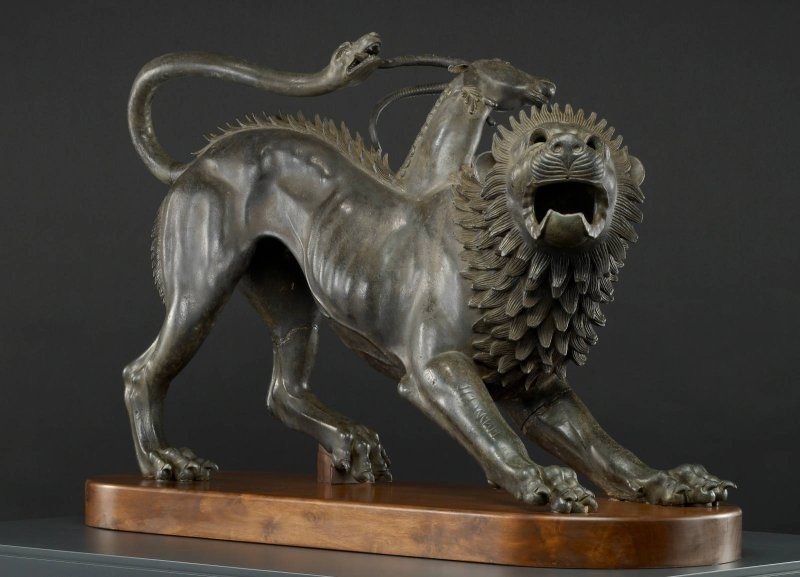
The Chimera of Arezzo statue is one of the greatest examples Etruscan art. It dates back to around 400 BC. and her discovered in 1553, along with other objects, that the Etruscans used as an offering to the deities. In Greek mythology chimera - a fire-breathing monster with the head and neck of a lion, the body of a goat and snake tail. According to legend, the monster was killed by the hero Bellerophon, who was riding riding a winged Pegasus. Near the right front paw of this chimera there is the inscription - TINSCVIL, which is considered a dedication to Tin - the Etruscan god day.
